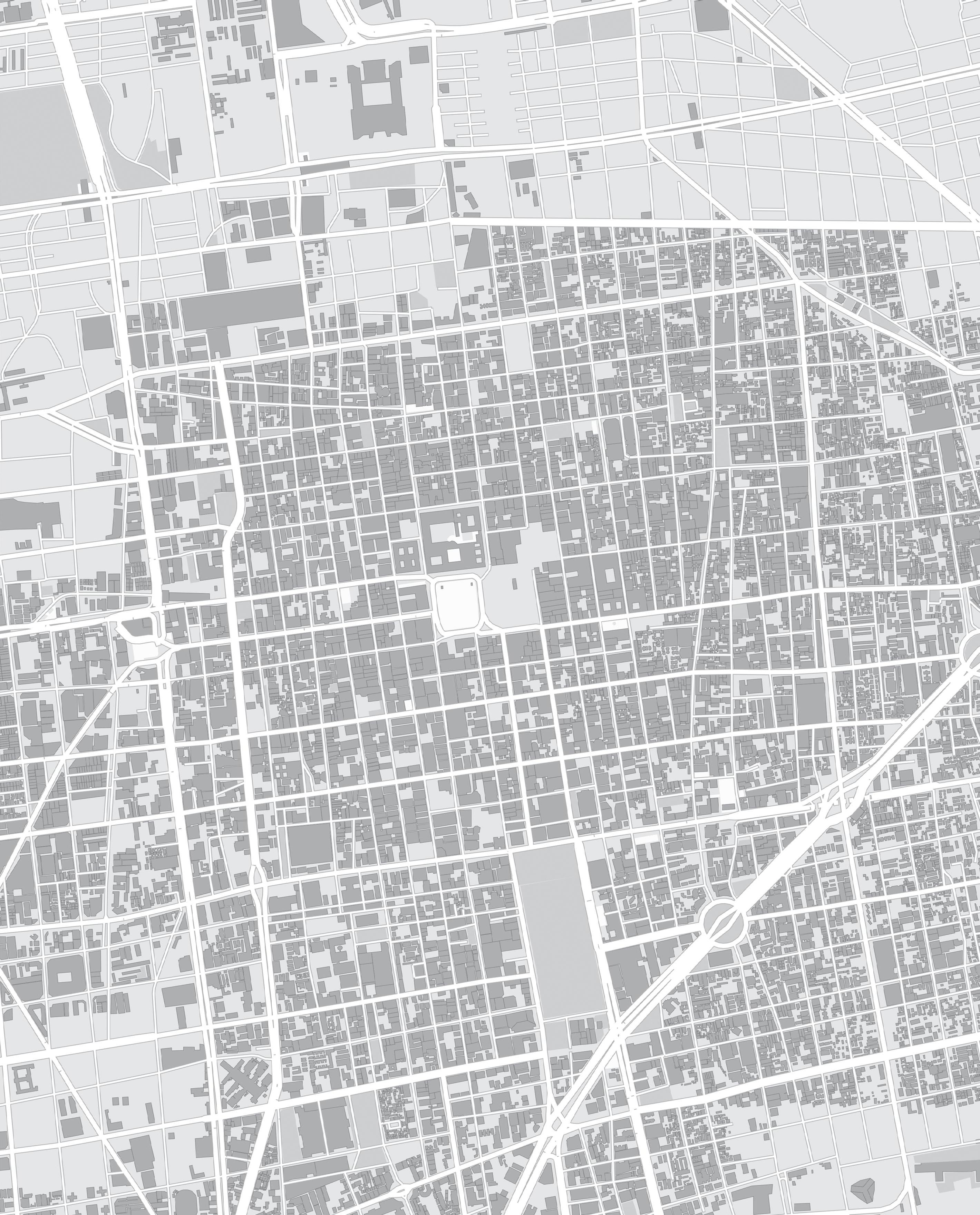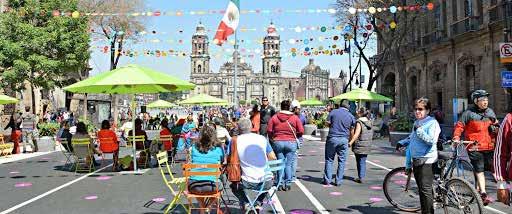
16 minute read
Conservatorio, Panama City, Panama
CASE STUDIES IN THE REGENERATION OF HISTORIC URBAN CENTERS CONSERVATORIO SA, PANAMA CITY, PANAMA CASE STUDIES IN THE REGENERATION OF HISTORIC URBAN CENTERS
Conservatorio SA, Panama City, Panama
CULTURAL HERITAGE FINANCE ALLIANCE
IN BRIEF
Panama City, bird’s eye view of Casco Viejo
Key Features
Conservatorio, SA, based in Panama, is a real estate development company that invests in historic urban areas by purchasing and restoring historic buildings for reuse and through brownfield development with new construction. Starting with a single project, Conservatorio has built a portfolio of properties that includes hotels, commercial office buildings, residential and cultural facilities—often in mixed-use format. From its first investment in 2005, the company has grown to a scale of $80 million in managed properties and $900 million in pipeline transactions.
Conservatorio was certified as a B Corporation in 2016. The company’s positive social impacts are built into its investments in two ways: directly, through creation of affordable housing; and indirectly, by supporting, and often creating, social and environmental benefit programs in the communities where it works. It has developed a trademarked Sustainable Urban Revitalization (SUR)™ strategy for its property acquisition and management. This approach seeks to avoid, mitigate and offset the tendencies of cultural homogenization and gentrification that often accompany development. To have a positive influence on neighborhoods, SUR promotes affordable-housing rents and sales, increased home ownership, safety, employment, diversity, environmental stewardship and community cohesion. Initiatives created by Conservatorio include a program for gang rehabilitation, a community leader development program and a “rent to own” model, and a soon-to-be-launched publicly traded historic property fund.
Conservatorio uses a combination of industry standard metrics and its own proprietary benchmarks for social investment and environmental impact, and in its reports to investors it classifies outcomes in accordance with impact investing metrics and the UN’s SDGs. Equity investors in the company’s projects, who are committed to investing for impact, can expect a market-level return on investment.
Success Factors
• Investments are structured to achieve both profit and impact. • Strategy emphasizes mixing incomes and property uses and encouraging local ownership. • Direct funding and space for social programs helps maintain community diversity. • Human-centered design and stakeholder engagement guide community activities. • The strategy targets project-level returns to investors in the range of 15-20%.
Location
Historic Center of Panama City, Panama, including 50,000 m2 with World Heritage designation
Project Type
Urban regeneration through mixed use of historic buildings, new construction, social programs and job creation
Project Objectives
Preservation, rehabilitation and conversion of derelict buildings for new businesses, affordable housing and job creation to strengthen the social and human, environmental, financial and cultural capital of communities
Duration
2005–present
Business Model
For-profit corporation with Benefit Corporation (B Corp) certification
Investment Model
Investors in the for-profit company and/ or individual projects receive a variable return
Current Leadership
Keyes Christopher (K. C.) Hardin, founder and CEO
Website
Conservatoriosa.com
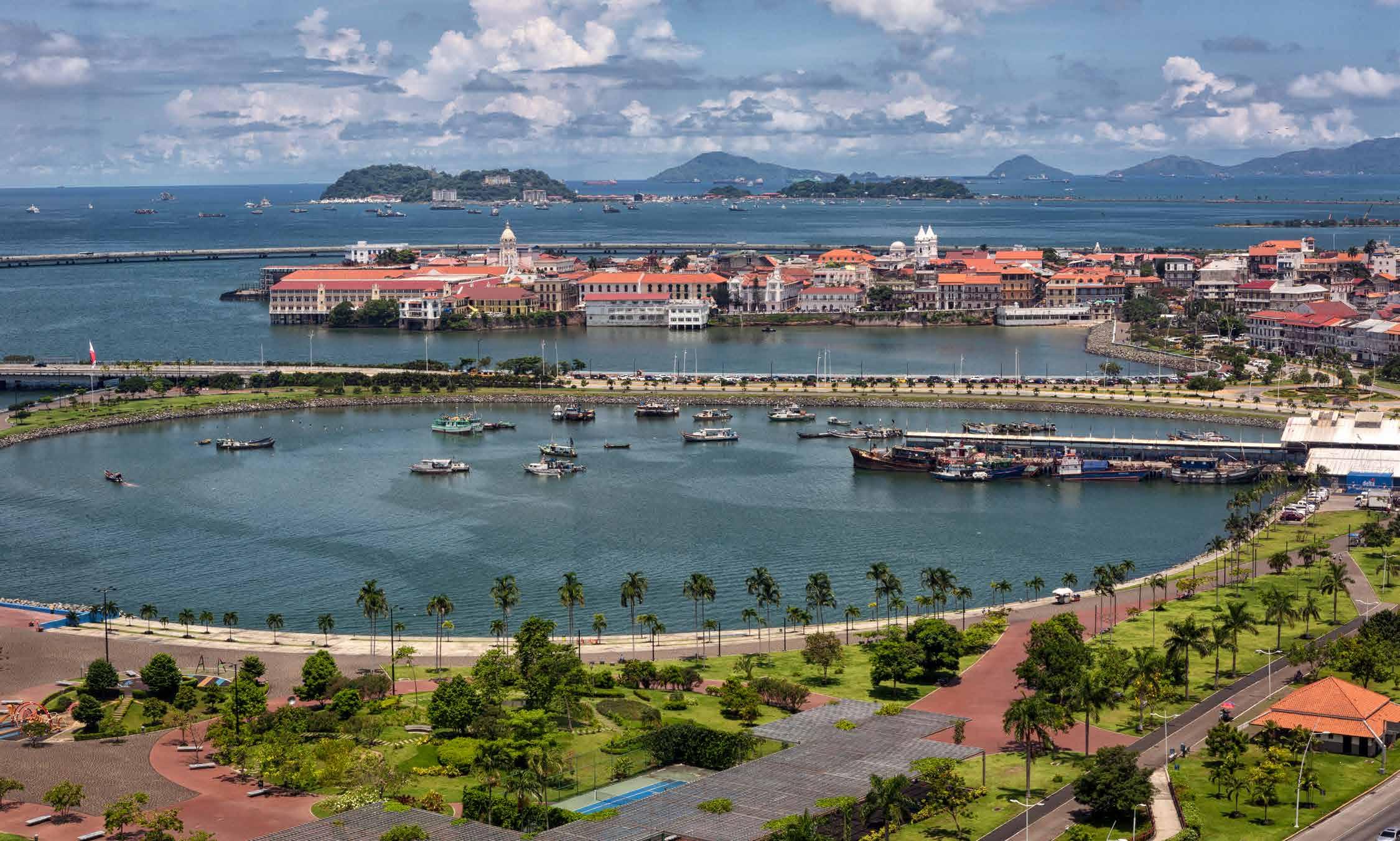
Panama City, bird’s eye view of Casco Viejo
Program Development & Implementation
The Gateway Opens
Adjacent to the western entrance of the Panama Canal, Casco Viejo or Old Town, Panama City is a diverse mix of people and architecture, having witnessed Spanish, French and American occupation over time. Also known as San Felipe or Casco Antiguo, the neighborhood is modest in size, a mere 28 blocks defined by three avenues and four public squares. On an intimate scale, Casco Viejo epitomizes the challenges of modern urbanization of historic enclaves. Centuries of changing sovereignty and demographics, failing infrastructure and the growth of poverty during the 20th century the neighborhood was subject in the 1980s to disinvestment, squatters, gangs and crime.
The end of military rule in 1989 and the area’s inscription on the World Heritage list in 1997 produced a change in perception. A floodgate of investment opened in Panama City after the 1999 handover of the Panama Canal and skyscrapers began to sprout up throughout modern areas of the city. Likewise, the unrealized potential of Casco Viejo, with its French colonial architecture, walkability, and diverse culture, began to attract interest as the real estate market heated up. However, as one of the city’s lowest income and densest urban populations, Casco Viejo was not quite yet ready for tourism.
Local Connections
Conservatorio S.A. was founded in this environment by two lawyers, one American and the other Panamanian. Their first investment was an abandoned neo-classical building that had previously housed the National Conservatory of Music. The project would become Conservatorio’s proof of concept and inspire its name. Their vision to create a live-work space for artists did not initially attract the artists or attention promised—instead it attracted attention from local street gangs who probed the new construction activity for opportunities. Gang activity was so prevelant in the area at the time that the Conservatorio Building, as it came to be known, and an early hotel investment, the three room, Canal House, were repeatedly grazed by stray bullets. Though the Conservatorio Building later became the home of a music foundation created by Grammy-winning Jazz musician Danilo Perez, and the Canal House went on to house actor Daniel
Craig during the filming of a James Bond movie, they were created by the company at a time when the neighborhood was still widely perceived as too dangerous for commercial activity.
As a response to this inhibiting factor, the company in its early years blurred the line between being a business and an NGO. Living in the neighborhood afforded the founders a first-hand understanding of community needs. Hardin co-founded Esperenza San Felipe, a gang reintegration program that would offer gang members a path to employment, including the chance to join his construction crews and building staffs. The success of this effort gained attention from MIT’s Real Estate Innovation Lab and was recognized in 2016 by the Aspen Institute’s McNulty Prize. Both social engagement and human-centered design are indicative of the approach to development that supports Conservatorio’s success. Hardin notes that “the maintenance of human architecture” was integral to the building renovations and neighborhood regeneration.
Preserving Diversity in the Urban Ecosystem
Conservatorio’s core activities are renovation of historic properties and construction of new buildings as mixed-income, mixeduse complementary ensembles. Conservatorio’s mission as a B Corp is not limited to the renewal of built heritage, but includes the entire urban ecosystem of buildings and people. Conservatorio takes a holistic, long-term view that connects improvements in quality of life for the community to value creation for shareholders.
Conservatorio’s overarching philosophy is based on balanced capital growth, approaching built heritage, social, human, financial, environmental and cultural capital as valid and critical forms of community wealth. The philosophy, which the company refers to as “Sustainable Urban Revitalization” (SUR) is visible in company’s broad product mix and approach to selecting tenants and encouraging home ownership. Conservatorio sells residential units, encouraging local ownership, and rents commercial units, favoring independent tenants over retail chains. Conservatorio’s property portfolio mixes high-end and affordable units in housing, office, hotel and retail, alongside community resources such as galleries, theaters, and startup incubators.
SUR is a strategy for mitigating negative externalities of renewal, while advancing positive social outcomes. The approach strives to guard against the tendencies of cultural homogenization and gentrification that often accompany development. To have a positive influence on neighborhoods, SUR promotes equity in the form of affordable housing rents and sales, increased home ownership, safety, employment, diversity and community cohesion.
Promoting equity through home ownership is a particularly critical and difficult challenge. To further this goal, Conservatorio builds one affordable housing unit for each high-end market unit, a variation of a common B Corp model, Buy One-Give One. Affordable and market rate apartments are built to the same quality standards, but may differ in amenities such as parking, number of bedrooms, and location within a complex. Thus far Conservatorio has invested in almost 150 affordable units. One example is Casa Balcones in the Santa Ana district of Panama City, with 39 residences of which 31 are affordable with an average price of $120,000. An earlier building, Flor de Lirio, offers

apartments at $39,000, which is considered within reach of 85% of the Panamanian population. But according to Conservatorio, transitioning neighborhood residents from informal housing to home ownership is a persistent challenge. While the Conservatorio has been successful in creating affordable housing in relatively high quantities, the company’s goal of graduating neighborhood residents from informal housing to home ownership continues to be a persistent challenge. Even though government subsidy programs make a $120,000 two-bedroom apartment affordable to a couple earning just over minimum-wage, they are still out of reach for many informally employed Casco Viejo locals. To better address this population’s needs, the company is developing a rent-to-own program with a local bank.
Gaining Momentum
Conservatorio’s portfolio grew with additional hotel offerings, including the mid-range six-room Las Clementinas that incorporated salvaged wood from the US Army barracks and desks from the British Embassy. The original Conservatory building has been converted to a new music conservatory where local music students train before graduating to play at the jazz club that entertains visitors at Conservatorio’s high-design boutique hotel next door. The American Trade Hotel, originally managed in collaboration with Atelier Ace, was unveiled to critical acclaim in 2013. In San Felipe, the high end and mid-range hotels were complemented by retail (La Avenida and Flor de Lirio) and housing.
Conservatorio’s investments, initially centered within Casco Viejo and San Felipe, have expanded into the adjacent district of Santa Ana. Co-founder Hardin notes that this area “had good bones” in its built heritage, pre-automobile walkability and diverse communities. Over time success and iteration of practice have enabled Conservatorio to scale up from single building, $2-5M projects to ensembles such as La Quince, approaching the $35M scale, with projects as large as $150M being planned. La Quince, an enclave of six buildings in Santa Ana, is currently under construction. When completed La Quince will offer 89 affordable apartments, 56 market-rate and 52 commercial units in addition to art and event spaces and parking, all within Casco Viejo.
Community Co-Creation
Conservatorio devotes 1% in every project budget to social impact initiatives that have been identified and articulated through stakeholder engagement in participatory workshops with local communities using a methodology called “LiderazCo” that the company developed with MIT’s Community Innovator’s Lab. In collaboration with residents, Conservatorio has:
• Researched and implemented a multi-sectoral social intervention program called Santa Ana Lidera which, with a grant from
USAID, attracted five NGOs to address specific critical social needs identified by the Santa Ana community
• Executed tactical urbanism interventions, such as a healthy bus stop (La Parada Sana) and community gardens.
• Rehabilitated a community meeting space in the Hotel Santa
Ana that anchors multiple programs
• Founded Esperanza San Felipe gang reintegration program that offers, in exchange for a commitment to reject violent activity, a 12-week intensive job training with placement and seed-funding opportunities for startups
• Designed La Manzana Urban Innovation Center, a 6000 square meter hub for NGOs, academic institutions and social entrepreneurs that is scheduled to open in 2021

Measuring the Impacts
Conservatorio evaluates and reports its social impact using both B Corp and IRIS metrics, in addition to other non-financial indicators. It defines the impact of its work through a variety of quantifiable factors, from affordable housing to market level ratio, reduced distance of commutes, and the amount of outside investment attracted to social programs. When baseline values for poverty indicators were not available for comparison, Conservatorio sponsored “Panama’s first adaptation of the UNDP Global Multi-Dimensional Poverty index to a community level” so it could follow long-term impact of its development in the Santa Ana neighborhood (per the Responsible Business Forum, Saïd Business School) see Sources & Documents).
Conservatorio reports to investors on the quantitative and qualitative contributions it makes to its ecosystems, applying the framework of the United Nations Sustainable Development Goals (SDGs) to categorize results. It tags specific SDGs to the five categories of capital that Conservatorio strives to develop. While use of the SDGs pervades sustainability and investment vehicle reporting in the business world, Conservatorio is a rare example within the heritage development field to directly reference its contribution to the SDGs.
Riding the Wave
Conservatorio’s approach holds promise for replication in other locales. While the majority of its work has focused on Panama City, more recently Conservatorio has entered ventures in Honduras and Guatemala. Casa Quinchon, a joint venture in Tegucigalpa, Honduras developed a 7000 m2 mixed-use industrial co-work space and incubator, has shown the value of Conservatorio’s SUR model and its commitment to human-centered design of real estate products and services.
Through the COVID-19 pandemic of 2020-21 Conservatorio continues to contribute to the urban ecosystem that it has cocreated, enlisting its LiderazCo network for community surveys and food and service delivery. Trust, creativity and collaboration have characterized its negotiations with tenants for leases and payment terms. As life, commerce and tourism rebalance over time, Conservatorio’s SUR model will be put to the test to demonstrate its ability to bring resilience to the business and its stakeholders.E
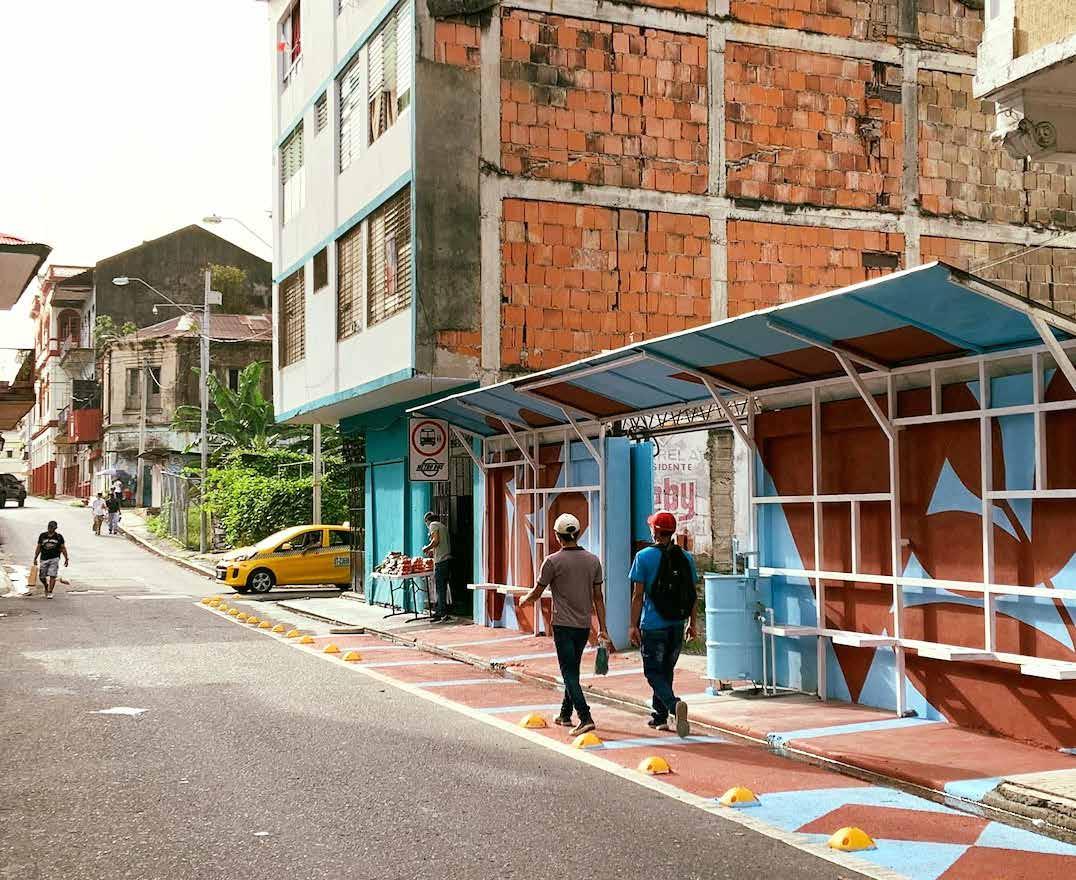
Temporary public realm improvements

Panama City, Flor de Lirio after restoration
CASCO VIEJO, PANAMA CITY, PANAMA
13 11
12 15
10
TEGUCIGALPA, HONDURAS
5 4
Propierty Name
1 Las Clementinas
Status
Completed 2010
2 American Trade Hotel Completed 2013
3 El Colegio
4 Flor de Lirio
Completed 2014
Completed 2015
5 Casa Quinchon, Honduras Completed 2018
6 El Colegio II
7 Dos Casas
Completed 2018
Completed 2016
8 Benedetti Hermanos Completed 2018
1 8
2
3 6
14
7 9
Propierty Name
9 Casa Vidal
10 Casa Korsi
11 Casa Quijano
12 Casa Balcones
13 La Manzana
14 Santa Familia
15 Casa Patterson
Status
Completed 2018
In Development
In Development
In Development
In Development
In Development
Sold
Timeline
1914
Panama Canal completed by the U.S.
1983-1989 Manuel Noriega’s authoritarian rule in Panama
1997
Casco Viejo inscription in World Heritage List
1999
Panama Canal handed over from U.S. to Panama – 31 December
2005
Conservatorio SA founded
2007
2010
2013
2013
2014
2014
2015
2016
Canal House opened; American Trade Hotel building purchased
Las Clementinas, 6 room hotel renovation completed
American Trade Hotel opens
Esperanza San Felipe co-founded with Matt Landau
Controversial Cinta Costera Phase III causeway completed around Casco Viejo, of which Conservatorio was vocal in opposition El Colegio office building completed
Flor de Lirio affordable housing renovation completed
Esperanza awarded Aspen Institute McNulty Prize Company certified as a Benefit Corporation (B Corp) Dos Casas, mixed use commercial building completed
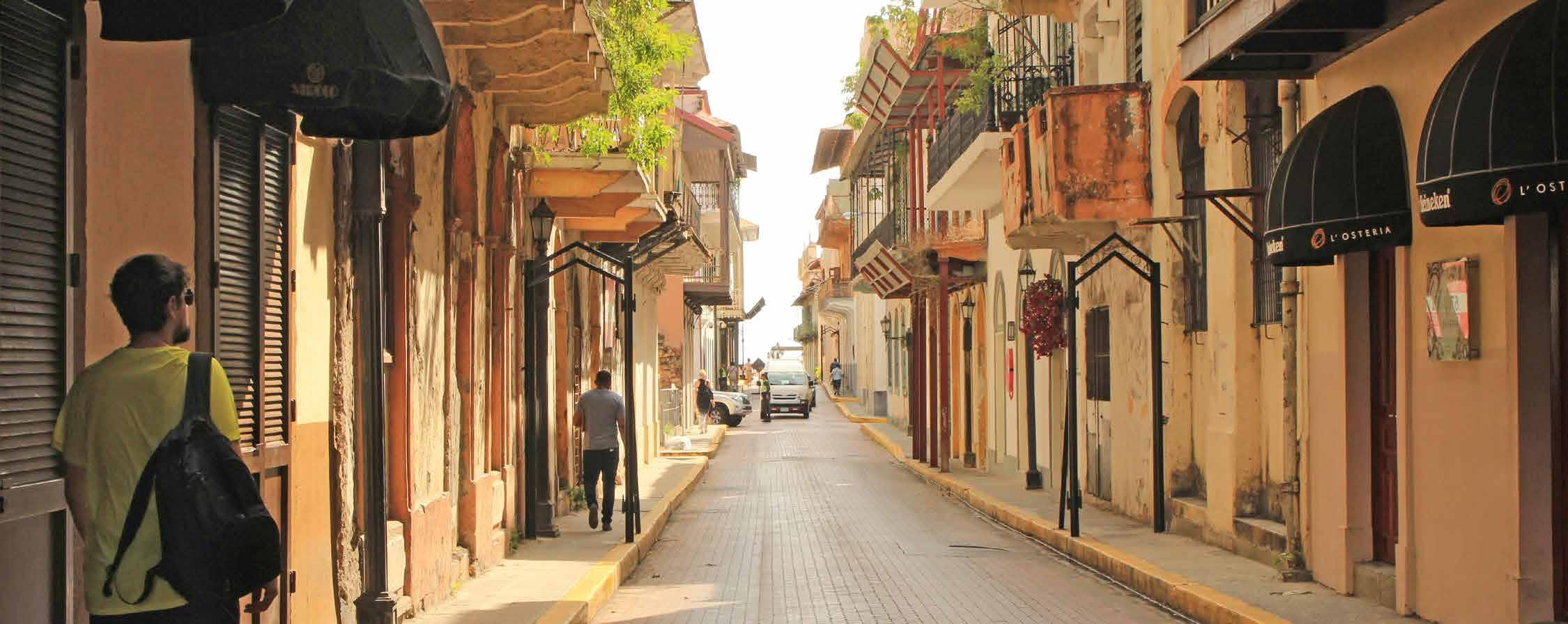
Panama City, street in Casco Viejo
Financial Performance Summary
Information Item Description
Transaction Summary In a typical transaction, Conservatorio will purchase a building or assemble land, then plan, permit and prepare the project for apartment pre-sales. At that point, Conservatorio invites investors in as limited partners (LPs) with Conservatorio taking the role of the general partner (GP) in charge of executing the project.
Investors
Amount
Instruments
A typical project will take from three to five years and will have from five to fifteen LPs, each of whom invest $250,000 or more.
In recent years, projects have ranged from $35M to $50M, typically with 30-40% equity.
Combination of common equity, preferred equity (mezzanine) and bank debt.
Investment Mechanism Investments can be structured through local vehicles (sociedad anonimas) though when dealing with sophisticated international investors, an LLC or Limited Partnership with English language documents familiar to the investors and domiciled in a country with trusted courts is preferred.
Currency
Investors prefer US dollar denominated investments where possible.
Fees and Expenses Typical profit splits on residential development projects provide equity investors with an 8-10% preferred return prior to Conservatorio receiving a share of the profits. Conservatorio’s share of the profits can start at 20% and reach 50%, once return threshholds are satisfied. Conservatorio receives a development fee to cover its overhead during the development process.
Governance
As General Partner Conservatorio maintains broad control rights over projects, with Limited Partners having rights over decisions that affect the fundamental character of the investment. Conservatorio itself is governed by a seven member board of directors that includes investor-appointed directors and independent directors.
Governing Law
Performance
When international structures are used the law of the juristiction where the investment vehicle is based. Typically Delaware or New York.
Equity returns target 15%-20% IRRs. Preferred (mezzanine) returns are typically in the range of 8-12%
Sustainable Development Goals
GOAL 4 Ensure inclusive and equitable quality education and promote lifelong learning opportunities for all:
• Over a hundred community leaders have been trained through LiderazCo, Conservatorio’s training program. • Development projects incorporate cultural activities open to community participation including theater, music and fine arts.
GOAL 5 Achieve gender equality and empower all women and girls:
• Financial support of the work of Futbol Con Corazon, and Voces Vitales, nonprofit organizations that work with the women of the community in life skills and employment training
GOAL 8 Promote sustained, inclusive and sustainable economic growth, full and productive employment and decent work for all:
• Investments in distressed communities through housing creation and access to financing for private ownership • Employment opportunities for local communities directly in construction projects and indirectly through the businesses that occupy Conservatorio properties • Support of community job-training initiatives and grants program in the area
GOAL 10 Reduce inequality within and among countries:
• Conservatorio encourages first-time home buyers through affordable housing creation and facilitating access to financing. • One affordable housing unit built per high-end unit helps to retain diversity and inclusion of residents of different socioeconomic backgrounds.
GOAL 11 Make cities and human settlements inclusive, safe, resilient and sustainable:
• Develops mixed-use and income-generating spaces • Invests in Esperanza San Felipe, a gang reintegration program that has increased safety for all residents in and visitors to the neighborhoods • Invests in renewal of historic building fabric
GOAL 13 Take urgent action to combat climate change and its impacts:
• Projects near transportation hubs have reduced commute time and contributed to a lower carbon footprint for residents • Conserving historic building fabric offers a lower carbon footprint than the alternative of demolition and new construction • New construction is guided by EDGE certification requirements
GOAL 16 Promote peaceful and inclusive societies:
• LiderazCo program develops community leaders and facilitates multi-sectoral engagement processes • Creation of Fundación Esperanza San Felipe and continued participation by residents in its programs have contributed to a significant reduction of crime and increase in neighborhood safety • Financial support of Fútbol con Corazón, a social enterprise focused on providing life education programs through soccer, keeping children in school and reducing gang membership in the area
GOAL 17 Strengthen the means of implementation and revitalize the global partnership for sustainable development:
• Conservatorio partners with numerous public and private institutions for its social impact projects.
Sources & Documentation
Bernstein, F. “Mission Viejo,” New York Times, September 17, 2012. https://www.nytimes.com/2012/09/23/t-magazine/ panama-city-mission-viejo.html
Conservatorio SA, Corporate Profile, 2019.
“Esperanza (Panama) Central America Leadership Initiative,” retrieved from https://www.aspeninstitute.org/blog-posts/2016mcnulty-prize-laureates/.
Heymann, S. “Ace Plans to Open Luxury Hotel in Panama,” New York Times, August 12, 2013. http://intransit.blogs. nytimes.com/2013/08/12/ace-plans-to-open-luxury-hotel-inpanama/?r=0
Neville, T. “Panama City Rising,” New York Times, May 13, 2013. https://www.nytimes.com/2013/05/05/travel/ panama-city-rising.html Rathbone, J.P. “New life from old foundations,” Financial Times, March 27, 2012. https://www.ft.com/content/a60dba04-738c11e1-94ba-00144feab49a
Responsible Business Forum, Saïd Business School, Conservatorio: Economics of Mutuality Case Study. 2019.
Santiago, A. “Isthmus Presence,” Vanity Fair, March 2013, pp. 104-111.
Stein, J.D. “A new rhythm in old Panama City,” Financial Times, Oct. 10, 2014.


